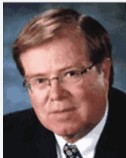Editor’s intro: Dr. John L. Hayes says that 60% of malocclusions are from an unknown cause. Discovering the etiology of malocclusion will result in better final treatment results that will be easier to attain and longer lasting.
Orthodontic Practice US is the one orthodontic publication that I thoroughly enjoy reading from cover to cover. It continues to be a most valuable asset for our practice because of its practicality and innovation.
We have tried, in a small way, to keep up the Orthodontic Practice US tradition of innovation by way of manuscripts that have covered some of the most pressing current orthodontic unknowns, in our opinion. We started with the historical difficulty of reliable transverse diagnosis;1 then on to improved transverse diagnosis;2,3 proposed a new approach to help resolve anterior open bite (AOB);4 proposed a new approach to help resolve impacted canines without surgery;5 and suggested an approach for improving the chances for new research discovery.6
Two themes run through these manuscripts: 1) treat the etiology to help resolve the malocclusion and 2) treat early enough with a new innovative Phase I regimen. We agree with the late great Dr. Allan G. Brodie: “It should be apparent by this time that my own answer to the question of when a malocclusion should be treated would be the same as for almost any other abnormal condition or disease, namely, when it is first seen.”7
Thirty-five years ago during the first week of my orthodontic residency, it was disheartening to see a pie chart in our assigned text that revealed that only 5% of malocclusions were of known cause; 60% were of unknown cause; 35% of the public had no malocclusion. If one were to believe the chart, orthodontists were treating most cases without knowing the cause of that which they were treating. That moment started our lifelong investigation into the etiologies of malocclusion.
New orthodontic inventions can be important; however, new inventions likely do not address etiology — the root cause of a condition. The hope is that a better understanding of the etiology of malocclusion will yield better final treatment results, results that will be easier to attain and longer lasting; patients deserve no less: “The ideal treatment approach for any disease is identifying the etiology, understanding the pathophysiology, and removing the etiology.”8
By the late 1980s, we had proposed a new etiology theory along with a new Phase I regimen. A 10-year study of “early Phase I only — no braces care” followed a successful pilot study. In the past 30 years, we have treated thousands of Phase I patients successfully by attempting to address the etiology of their malocclusions. We have found that some patients have not needed Phase II care; however, most patients do require some Phase II care; case complexity is remarkably improved; formerly impacted canines become de-impacted; anterior open bites are usually resolved by the time for braces; CL II cases usually resolve — without relapse by time for braces. Post-orthodontic relapse is essentially a non-issue (for example, formerly CL II patients corrected to CL I remain CL I (we use only removable retainers).
Our referenced manuscripts suggest how to treat the etiology of malocclusion in any practice by following a new Phase I treatment plan regimen. The measured skeletal deformity that contributes to the etiology of malocclusion can be determined and corrected.1-5
There is more good news: Treating the etiology of many malocclusions also helps some medical maladies that have an airway component. Two birds with one stone.
Dr. John L. Hayes
Read more from Dr. John Hayes on the etiology of malocclusion, in his article “In search of the etiology of malocclusions — a common discovery technique is proposed.”
- Hayes JL. In search of improved skeletal transverse diagnosis. Part I: traditional measurement techniques. Orthodontic Practice US. 2010;1(3):34-39.
- Hayes JL. In search of improved skeletal transverse diagnosis. Part II: a new measurement technique used on 114 consecutive untreated patients. Orthodontic Practice US. 2010;1(4): 34-39.
- Hayes JL. Proposed clinical skeletal transverse measurement technique –palpation adjacent to the molars. Orthodontic Practice US. 2011;2(2): 28-29.
- Hayes JL. A new regimen of Phase I care applied to anterior open bite—10 case studies: an etiology proposed by the strategy of triangulation. Orthodontic Practice US. 2012;3(3): 118-26.
- Hayes JL. A new regimen of Phase I care applied to potential canine impactions. Orthodontic Practice US. 2013;4(3): 44-51.
- Hayes JL. In search of the etiology of malocclusions—a common discovery technique is proposed. Orthodontic Practice US. 2018;9(5):60-64.
- Brodie AG. The Fourth Dimension in Orthodontics. Angle Orthod. 1954;24(1):15-30.
- Kim KB. How has our interest in the airway changed in the last 100 years. Am J Orthod Dentofacial Orthop. 2015;148: 740-747.
Stay Relevant With Orthodontic Practice US
Join our email list for CE courses and webinars, articles and mores

 John L. Hayes, DMD, MBA, received his dental degree from the Boston University, H.M. Goldman School of Graduate Dentistry and his orthodontic certificate from the University of Pennsylvania, School of Dental Medicine, Orthodontic Department where he is a Clinical Associate. He continues to research and lecture on the advantages of early interceptive treatment and on the etiology of malocclusions. Dr. Hayes is in private practice in Williamsport, Pennsylvania, with his wife, Sharon, who is also an orthodontist. He can be reached at
John L. Hayes, DMD, MBA, received his dental degree from the Boston University, H.M. Goldman School of Graduate Dentistry and his orthodontic certificate from the University of Pennsylvania, School of Dental Medicine, Orthodontic Department where he is a Clinical Associate. He continues to research and lecture on the advantages of early interceptive treatment and on the etiology of malocclusions. Dr. Hayes is in private practice in Williamsport, Pennsylvania, with his wife, Sharon, who is also an orthodontist. He can be reached at 
